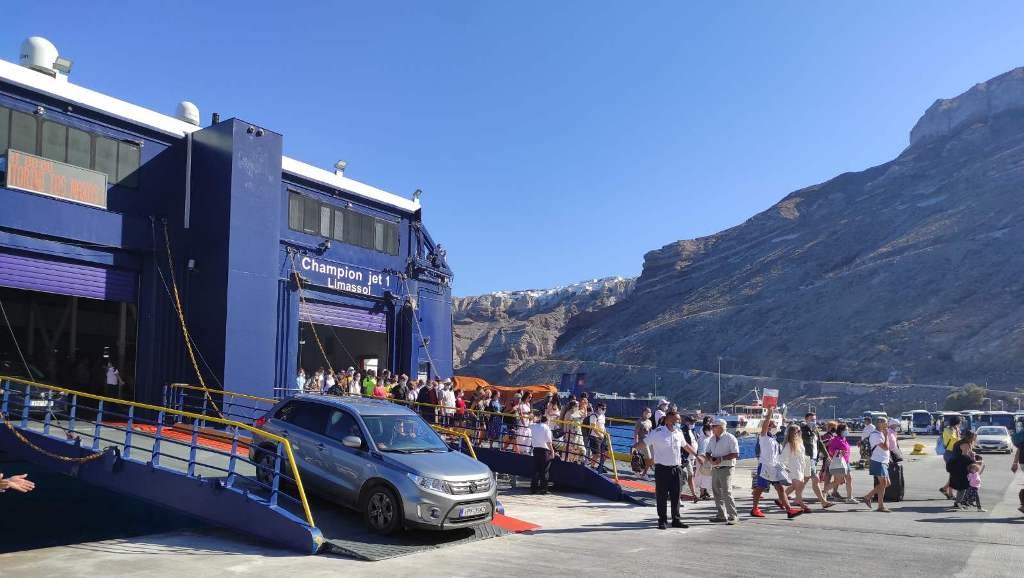“A few days ago, 19,000 people arrived on the island by cruise ship in a few hours. We made a great effort so that the 63 days of this summer, which will be very difficult (including -arriving on the cruise ship), will be reduced to 48. But this number of people is impossible to serve properly “.
THE mayor Santorini Nikos Georges spoke at the day “Insularity and Sustainability: Islands on the Edge”, organized yesterday by the Hellenic Society for Environment and Culture (ELLET) and the University of the Aegean about the situation in which the island finds itself today. He continued to say “From 2012 to 2019, water consumption will double. From 2019 to 2022 it will increase by 18%, from 2022 to 2023 by 22%. The desalination that we calculated to cover us for 15 years, has finally arrived in 5 years. The consumption of electricity on the island went from 32.5MW in the peak season of 2019 to 59MW this year. In Oia, where the investment in tourism continues, in April we have 31% increase in visitors compared to last year and in May by 28%. The most serious issue, however, is the excessive construction, and this is because the irreparable damage has been caused, the landscape has not been restored”.
Double-edged sword
Regarding the infrastructures, Mr. Georges will state “I have heard some people say that we need to improve the infrastructure. So the infrastructure will replace the landscape that has been lost? With 20% of the island built up, will we open new roads? Whatever that intervention to be made, will improve the conditions a little, but at the same time it will provide an incentive for further development of tourism on the island. Soon our area will become unsustainable. If the state continues to refuse to put in the brake of construction, in the licensing of tourist units, Santorini will be destroyed.
Analogous – of course in scale – is same situation in Serifos, as described by the mayor of the island Kostas Revinthi. “People go to islands like Serifos to take a break from their everyday life. How can he do this if he is stuck in traffic for 20 minutes and misses the ferry? How can this be done when he has already paid 200 or 300 euros for a room and there is no water to shower? Ait is hypertourism, which some say does not exist, if tourists are not served. The situation is similar in construction: there are so many newly built buildings – large villas with swimming pools – that the island’s infrastructure is not enough to cover them. Most building permits are legally flawed, but who checks them? Is an employee of Milos Town Planning supposed to serve Milos, Kimolos, Sifnos and Serifos? No control of the island for 4 years. All this will lead to the loss of Serifos, which we, residents and visitors love”.
Iby the image and the Ionian. “In our urban planning, 4,500 applications for new houses and 3,500 for the legalization of arbitrary ones are pending,” said the mayor of Lefkada, Xenofontas Verginis. “The festival continues. There are not enough roads, water, electricity, but we continue to build.”
“I have been to many islands recently,” said ELLET’s vice-president, Lydia Karras. “I have heard many stories. Elderly people who cannot live in their village because all the houses have been converted into tourist accommodation. Greeks abroad who returned to their island but now want to leave because they have no neighbors. Young people who say that their island will never be seen again. We must realize that what is built is not “de-built”. For some islands it may be too late, we must act quickly”.
The government is represented in the activity by two general secretaries: in Island Policy, Manolis Koutoulakis and Tourism Policy, Myron Flouris. “The State has receptive ears. But the local communities must also know what they want”, said Mr. Fluris. “The discussion about caves, swimming pools and unplanned construction of islands should be opened”, added Mr. Koutoulakis. “However, the responsibility is not only with the State, but also with the local communities. It is usually the one who pushes the rules to be avoided.”

